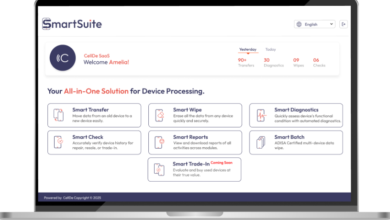What Are the Components of Knowledge Management Systems?

In the digital age, where information proliferation shapes the backbone of most industries, knowledge management systems (KMS) have become vital to corporate strategy. These systems enable organizations to harness knowledge within their structures, turning data into actionable insights. One must first grasp its key components to understand how KMS revolutionizes information handling and corporate learning. Below, we delve into the intricacies of knowledge management systems, paving the way to improved innovation and efficiency. Keep reading to dive deeper into this essential organizational tool.
Core Processes in Knowledge Management
Key processes must be considered when discussing a knowledge management system. These processes typically start with knowledge creation, where new insights are developed through individual effort or collective brainstorming sessions. The innovation process is as critical as management since it ensures a consistent flow of fresh ideas and perspectives into the system. A quick Google search
“components of knowledge management system” to learn more.
Once knowledge is created, it must be captured, meaning the insights are recorded in a tangible form that the system can store and index. This can be a complex task, as it involves translating tacit knowledge—information people carry in their heads—into explicit, documentable formats. Various technologies and methodologies facilitate this transfer, making it easier for organizations to retain intellectual capital.
After the capture phase, the knowledge must be refined and organized to ensure it is valuable and relevant. This involves taxonomy creation, content curation, and metadata assignment. By establishing categories and labels, users can locate and apply knowledge efficiently. Without this critical step, the system can become an unmanageable reservoir of data rather than a refined, accessible library of wisdom.
Knowledge dissemination and application represent the heart of knowledge management. Effective systems ensure that knowledge is shared across the organization and utilized in decision-making processes. Without the active application of knowledge to improve operations, solve problems, and spur innovation, the potential benefits of knowledge management remain unrealized.
Technological Infrastructure for Knowledge Sharing

The foundation of any knowledge management system is its technological infrastructure. Organizations must invest in robust platforms that can handle knowledge storage, retrieval, and communication complexities. Data servers, cloud computing solutions, and dedicated knowledge management software form the bedrock of this technology stack, providing the tools to deal with vast information.
Collaboration tools are a significant part of the technology required for knowledge sharing. These include intranets, social networks, and project management apps that facilitate the exchange of ideas in real time. Such digital environments are especially critical for distributed teams, enabling seamless communication regardless of geographical boundaries. These platforms often have features that enhance teamwork, such as commenting, tagging, and notification systems.
Another crucial aspect is the organization’s IT infrastructure, which ensures users can access knowledge whenever required. This entails reliable network systems, adequate bandwidth, and support for mobile access, among other things. A dependable IT infrastructure minimizes downtime, which is essential for maintaining consistent knowledge flow throughout the organization.
Finally, the security measures of this technological setup cannot be overstated. Since knowledge often encompasses sensitive data, the infrastructure must include advanced cybersecurity features. Regular updates, stringent access controls, and data encryption are just a few of the safeguards that must be put in place to protect a business’s intellectual assets.
Measuring the Effectiveness of Knowledge Management Initiatives
To evaluate the success of knowledge management systems (KMS), organizations begin by tracking usage statistics to understand how often and in what ways employees access the system. This data provides valuable insights into the system’s effectiveness and user-friendliness, revealing trends and patterns that reflect knowledge distribution across the organization.
Qualitative assessments, such as employee feedback through surveys, interviews, and focus groups, are equally important in measuring the KMS’s impact. This subjective input helps to gauge the system’s value from the users’ perspective, ensuring continuous improvements to meet their needs and maintain long-term effectiveness.
In the broader business context, a KMS’s impact can be linked to organizational goals, such as reducing time spent searching for information, enhancing customer service, or fostering innovation. Organizations can ensure that KMS initiatives deliver tangible benefits by aligning knowledge management efforts with business outcomes. While ROI calculations can be challenging to pinpoint, metrics like time saved, increased productivity, and improved project delivery offer a way to measure the financial impact of KMS investments.
Altogether, knowledge management systems are essential tools that streamline creating, sharing, and applying organizational knowledge, driving innovation and efficiency. By integrating robust technology, transparent processes, and effective evaluation metrics, businesses can fully leverage their intellectual assets to achieve strategic goals.




